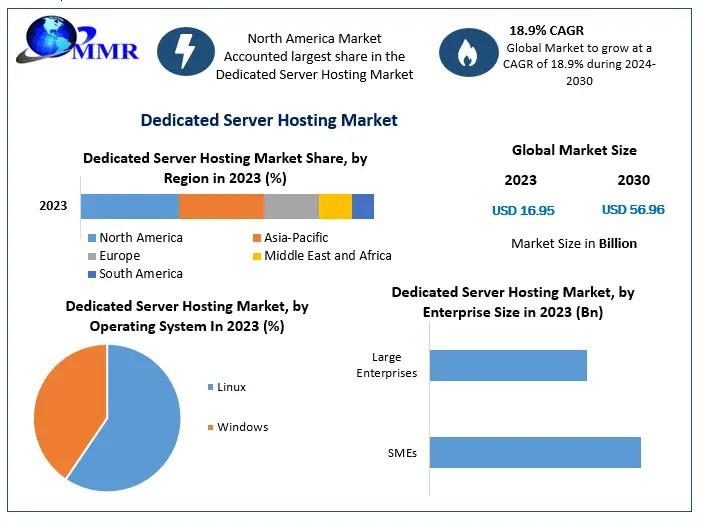A slow-loading page or a poorly performing VPS server hurts you in the long run. Optimizing your VPS server allows you to create a seamless user experience, whether you’re operating a site, data, or software.
You can use handy tactics to enhance your server’s effectiveness, dependability, and speed.
A Virtual Private Server (VPS) is a virtual machine that runs its own copy in the operating system. It comes with dedicated resources like CPU, disk space, and RAM. It’s like having your very own dedicated server but more cost-efficient.
In the same way, VPS servers are popular with individuals and businesses that require more control over their hosting environment yet don’t want to pay for a dedicated server.
Performance optimization is vital since it ensures that your VPS server is running efficiently and can handle your website application’s demands. A VPS server that performs poorly eventually leads to slow page loading times, plenty of downtimes, and loss of revenue for your business.
Optimizing your VPS server allows your application or website to run as smoothly and efficiently as possible.
This post will walk you through ways to optimize your VPS server for enhanced performance.
1. Check Your Server Resources
Checking your server resources is one of the steps to help you optimize your VPS server performance. This allows you to find programs and processes that exhaust your resources, such as storage, RAM, etc. You can track resource utilization with several programs.
You can also maximize any programs and processes that may eat up your excess resources as soon as you identify what they are. For example, if you want to clear your CPU or RAM, you may have to lower the number of Apache workers and SQL injections.
2. Optimize Your Server Configuration
Optimizing the configuration of your server also boosts your site’s performance. This includes compressing your files, caching, and configuring your web server so that you can handle requests seamlessly.
A vital part of your server’s performance is the content it delivers. Many handy online tools will help you optimize your site for improvements.
Great examples are WebPageTest.org and Google’s PageSpeed, which offers you speed and performance metrics, and other places on your site that can be optimized. Moreover, the further the end user’s browser is from the server, the longer it will take to deliver content. It can also get bogged down by content requests.
A content delivery network (CDN) allows you to shorten the space between your server and site visitors by storing starting content on nodes worldwide. This gives you a much quicker content delivery and better performance that frees your server’s resources.
3. Optimize Your Website’s Code
In the same way, optimizing the code of your site speeds up its loading times. One way to do this is to minify CSS, JavaScript, and HTML. Minifying codes eliminates unnecessary whitespaces and characters like new lines and comments. It decreases the file size and enhances your site’s loading times.
There are also different tools that you can use to minify code, like CSSNano, UglifyJS, and HTMLMinifier. Moreover, you can also use handy tools like Webpack and Grunt to help you automate the minification process.
4. Use Monitoring Tools
To ensure that your site works, monitor its performance carefully and then fix the points wherein its performance may fall short.
With a site monitoring tool, you can track essential performance metrics. It includes your page’s loading time, your server’s response time, error rates, and other issues that might affect the speed and performance of your site.
Handy tools that you can use are Google PageSpeed Insights and Pingdom. These tools offer you detailed reports on your site’s performance. It may also include suggestions for improvement and optimization. Using these tools diligently and regularly ensures that your site performance is optimal.
5. Utilize Caching
Caching is a process wherein you regularly store accessed data in memory to be accessed quickly. With caching, you can significantly reduce the total requests sent to the server, which enhances your VPS server performance.
There are several types of caching that you can use, and this includes:
- Page caching: This caches an entire page to be quickly served.
- Object caching: This caches individual objects like queries in the database as well as API responses.
- Opcode caching: This caches the compiled PHP code so that you can improve the PHP performance.
6. Streamline Your Traffic and Prioritize Applications
Traffic restrictions and organized applications help your VPS servers run better. For example, you can organize apps from the most important to the less critical ones.
In the same way, you can also use a load balancer so that traffic can be spread uniformly, even on several servers.
Conclusion
So there you have it. Your application or site’s seamless and efficient operation will depend on your VPS server’s functionality. You can improve your VPS server’s performance and avoid the most common mistakes by using the advice and best practices mentioned in this post.
So, ensure that you constantly monitor the utilization of your resources and the efficiency of your web server and database. Use caching and CDN to decrease the strain on your server. All in all, you can optimize the use of your VPS server by applying the appropriate tactics and tools in place. Good luck!
https://www.hostreview.com/blog/230613-how-to-optimize-your-vps-hosting-for-better-website-performance






